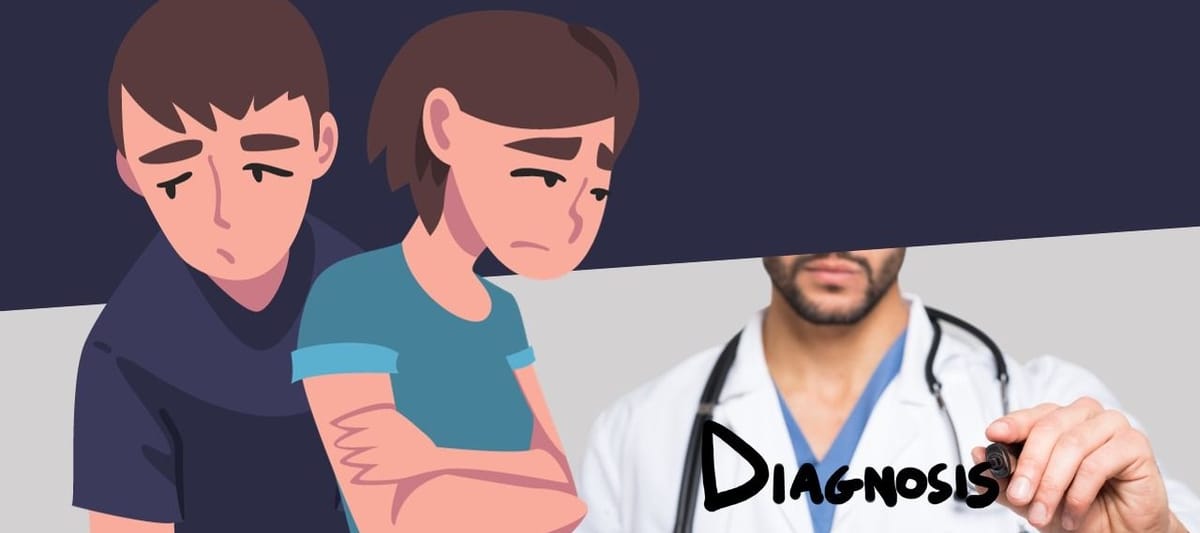What Is Dissociative Identity Disorder Diagnosis?
Unlock the mysteries of treating Dissociative Identity Disorder (DID) as we delve into the therapeutic techniques, support systems, and the journey toward healing. Explore how individuals with DID can learn to navigate the complexities of their condition and find a path to integration and recovery.

Ever wondered how mental health detectives uncover the mysteries of the mind? Well, let's embark on a thrilling investigation into the world of Dissociative Identity Disorder (DID) diagnosis!
In this article, we discover how mental health professionals identify and diagnose DID, unraveling the enigma behind its distinct symptoms. Learn about the psychological assessments and interviews that play a pivotal role in confirming a DID diagnosis. Some other ways to diagnose DID include clinical Evaluation, family and social history, brain imaging, and some other ways.
Explore the telltale signs and stories that offer insights into why DID can be tricky to diagnose. Dive into real stories of individuals on their journey to diagnosis, highlighting the importance of early detection and support.
Understand the challenges and controversies surrounding DID diagnosis within the field of psychology. So, if you're curious about how mental health professionals decipher the complex puzzle of DID, get ready for an exhilarating ride into the world of diagnosis!
What is DID?
First, we need to understand what Dissociative Identity Disorder is and what are the causes of it so that it's easy to identify the diagnosis.
It's a mental health condition where a person seems to have more than one distinct identity or personality living inside them. Each of these identities can have its name, memories, and way of thinking and behaving. People with DID might switch between these identities without even realizing it, and sometimes, one identity might not remember what the others did.
This condition usually develops as a way for the mind to cope with severe trauma, especially during childhood. It can be challenging, but with the right help and support, individuals with DID can learn to manage their different identities and lead fulfilling lives.
When Was Dissociative Identity Disorder Diagnosed?
Dissociative Identity Disorder (DID) has been recognized and diagnosed for many decades, although it has evolved through various names and descriptions over time. The condition was formerly known as Multiple Personality Disorder (MPD) and was first formally introduced in psychiatric literature in the 19th century.
However, it wasn't until the late 20th century, with advancements in the field of psychiatry and psychology, that DID received more comprehensive attention and refined diagnostic criteria. The Diagnostic and Statistical Manual of Mental Disorders (DSM-III), published in 1980, provided specific diagnostic criteria for DID, which led to more consistent diagnosis and understanding of the condition within the mental health community.
Since then, ongoing research and awareness efforts have continued to shape our understanding and diagnosis of DID, with the most recent criteria outlined in the DSM-5, published in 2013. The recognition and diagnosis of DID have evolved to better reflect our understanding of this complex mental health condition.
How DID Is Caused?
Dissociative Identity Disorder (DID) is believed to primarily result from severe and chronic trauma, especially during childhood. Here's an explanation in simple terms:
Trauma: When someone goes through tough or scary experiences, especially over a long time, it can be incredibly hard for their mind to handle. This could include things like physical, emotional, or sexual abuse, neglect, or other forms of severe stress and harm.
Coping Mechanism: DID is like a way for the mind to cope with this trauma. It's as if the mind splits into different parts, each handling a piece of the tough experiences. These parts become separate identities, and they may help the person manage the overwhelming emotions and memories.
Protection: The mind does this to protect the person from feeling too much pain. So, while DID might seem unusual, it's the mind's way of trying to keep the person safe during incredibly difficult times.
DID Diagnosis
Diagnosing Dissociative Identity Disorder (DID) involves a careful and comprehensive assessment by mental health professionals. Here's a simplified explanation:

- Clinical Evaluation: A mental health professional, like a psychologist or psychiatrist, talks to the person to understand their symptoms, experiences, and history. They might ask about memory gaps, identity confusion, and experiences of switching between different identities.
- Diagnostic Criteria: The professional uses criteria outlined in the Diagnostic and Statistical Manual of Mental Disorders (DSM-5) to determine if the person meets the requirements for a DID diagnosis.
- Psychological Testing: Sometimes, psychological tests or assessments are used to understand the person's experiences better.
- Interviews: Interviews with different identities or personalities, if present, might be conducted to learn more about them.
- Exclusion of Other Conditions: The clinician also checks if the symptoms could be due to other mental health conditions, ensuring an accurate diagnosis.

Key Takeaways!
The diagnosis of Dissociative Identity Disorder (DID) is a thorough and sensitive process led by mental health professionals. It involves understanding the intricate layers of the individual's experiences and identities. Proper diagnosis is the first step toward a tailored treatment plan, offering hope and support on the road to managing and healing from DID.
